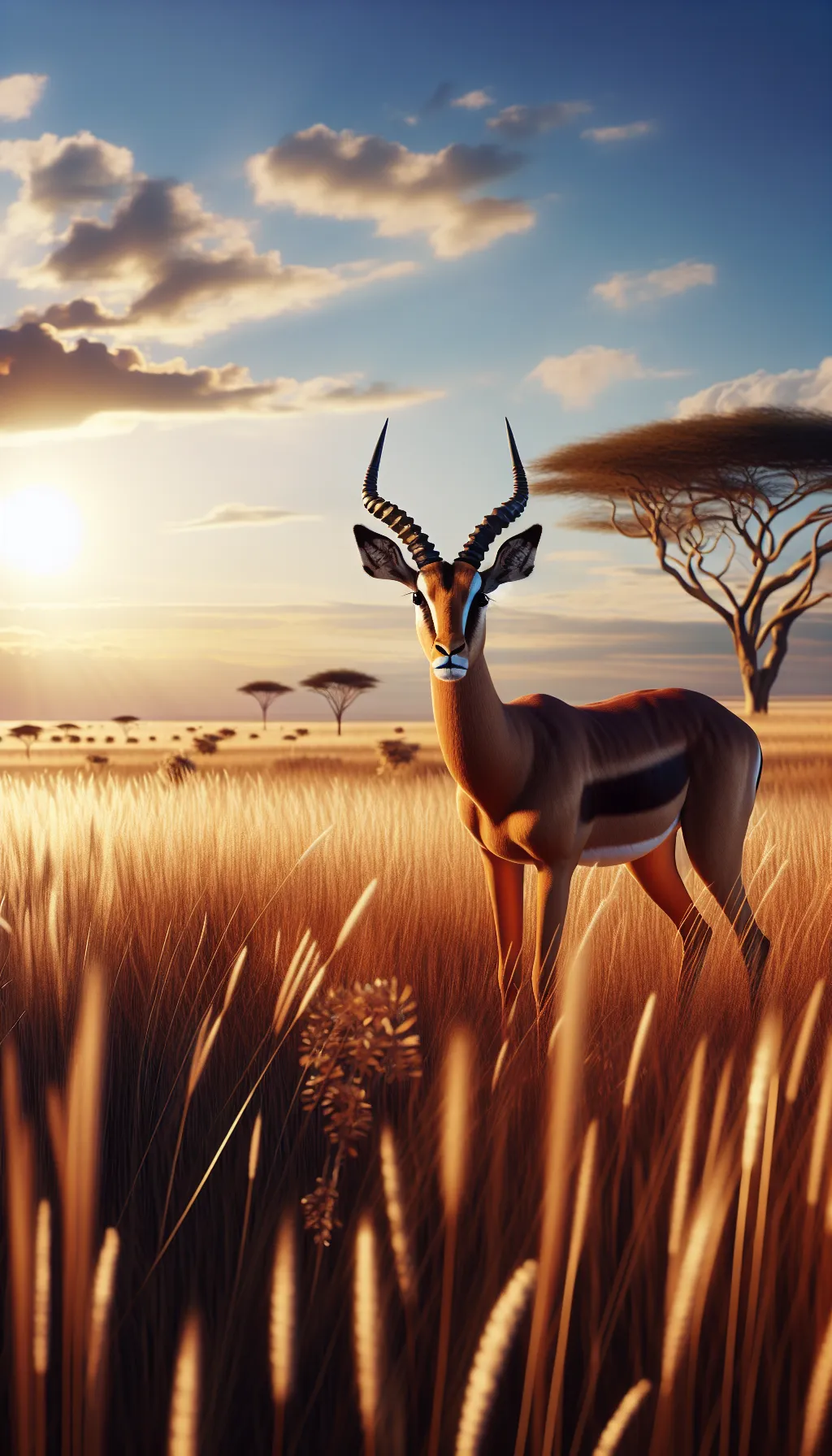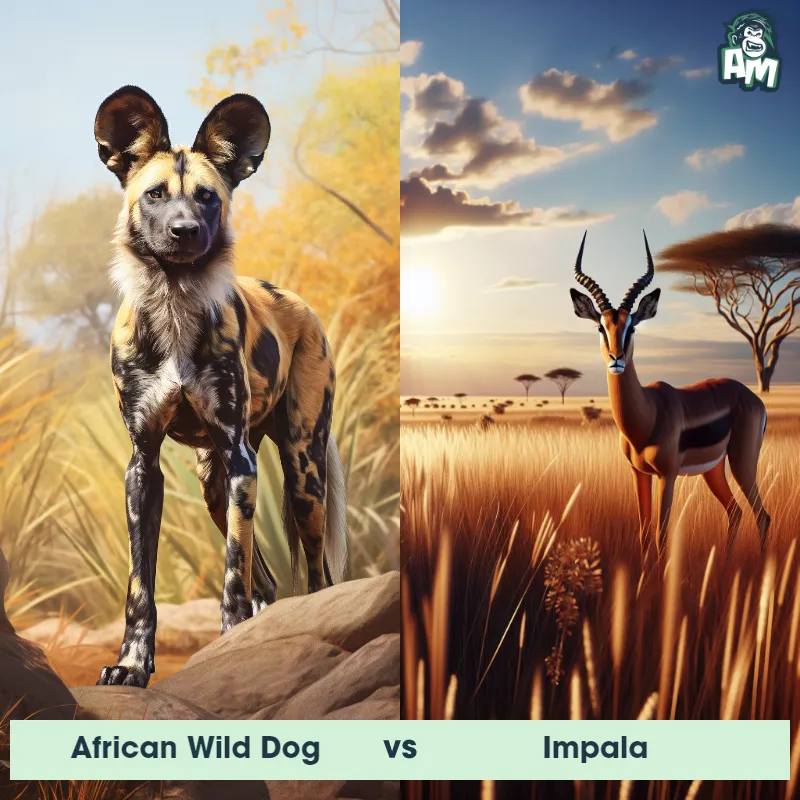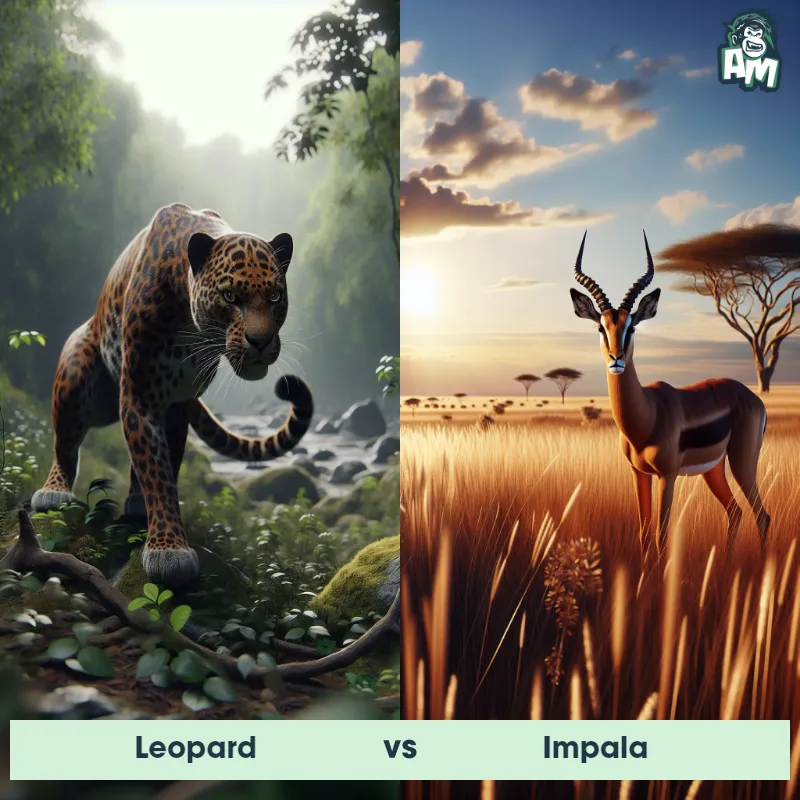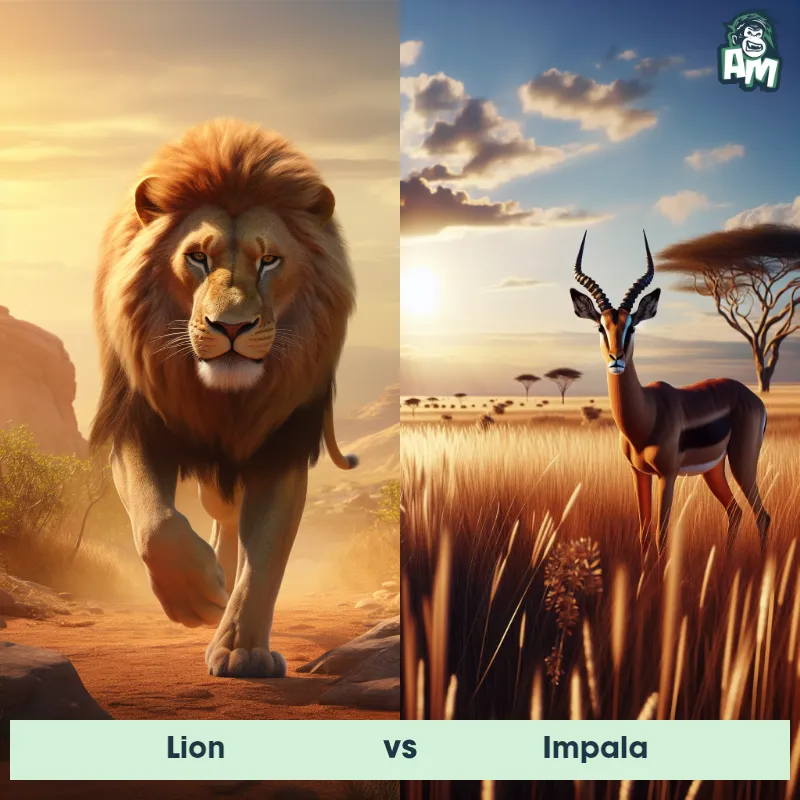The Impala
The Impala is a medium-sized antelope species native to Africa. They are known for their graceful appearance, with slender bodies, long legs, and a reddish-brown coat that shines in the sunlight. Both males and females have curved horns, although those of the males are larger and more impressive. With their remarkable speed and agility, Impalas can jump up to heights of 10 feet and cover distances of up to 33 feet in a single leap. They are highly social animals and live in herds, often consisting of females and young ones led by a dominant male.

| Impala | |
|---|---|
| Size | Height: 30-36 inches (76-91 cm), Length: 48-63 inches (122-160 cm) |
| Weight | 110-165 pounds (50-75 kg) |
| Speed | 150mph (241km/h) |
| Key Strength | Running speed and agility |
| Biggest Weakness | Lack of physical combat capabilities |
| Scientific Name | Aepyceros melampus |
| Family | Bovidae |
| Habitat | Grasslands and savannahs |
| Geography | Eastern and southern Africa |
| Diet | Herbivorous |
| Lifespan | 10 years - 15 years |

The Impala
The Impala is a medium-sized antelope species native to Africa. They are known for their graceful appearance, with slender bodies, long legs, and a reddish-brown coat that shines in the sunlight. Both males and females have curved horns, although those of the males are larger and more impressive. With their remarkable speed and agility, Impalas can jump up to heights of 10 feet and cover distances of up to 33 feet in a single leap. They are highly social animals and live in herds, often consisting of females and young ones led by a dominant male.
Fun Fact: One fascinating fact about Impalas is their ability to synchronize their breeding cycles. This phenomenon, known as "synchronous reproduction," helps increase the chances of survival for their offspring since they are all born around the same time when there is plenty of food available and safety in numbers.
| Impala | |
|---|---|
| Size | Height: 30-36 inches (76-91 cm), Length: 48-63 inches (122-160 cm) |
| Weight | 110-165 pounds (50-75 kg) |
| Speed | 150mph (241km/h) |
| Key Strength | Running speed and agility |
| Biggest Weakness | Lack of physical combat capabilities |
| Scientific Name | Aepyceros melampus |
| Family | Bovidae |
| Habitat | Grasslands and savannahs |
| Geography | Eastern and southern Africa |
| Diet | Herbivorous |
| Lifespan | 10 years - 15 years |
Impala Matchups
We use AI to simulate matchups between the Impala and other animals. Our simulation considers size, strength, and natural predatory behaviors to determine the most likely outcome.

Can't find the Matchup you want?
Create Your Own MatchupImpala: Diet, Predators, Aggression, and Defensive Behaviors
What do Impalas eat?
Impalas are herbivores and primarily graze on grasses, leaves, and shoots. They also supplement their diet with fruits and flowers. Their digestive system is adapted to efficiently process plant material, allowing them to thrive in their open savanna habitats.
Do Impalas have any predators?
Yes, Impalas have several predators in the African savannas where they live. They are hunted by carnivores such as lions, leopards, cheetahs, hyenas, and wild dogs. These predators rely on the speed and agility of the Impala to catch them during a chase.
Are Impalas aggressive?
Impalas are generally not aggressive animals. They are known for their skittish and cautious behavior, always on the lookout for potential threats. However, during the mating season, male Impalas may exhibit aggression towards each other in competition for mates.
Do Impalas fight?
Male Impalas may engage in fights during the mating season to establish dominance and secure mating opportunities with females. These fights typically involve locking horns and pushing against each other, with the more dominant male emerging victorious.
How do Impalas defend themselves?
Impalas rely on their speed and agility as their main defense mechanisms against predators. They can reach speeds of up to 55 miles per hour and are capable of agile maneuvers to evade predators. When faced with danger, they emit loud snorts as an alarm signal to alert the herd to potential threats.
What is the biggest weakness of Impalas in a fight?
The biggest weakness of Impalas in a fight is their relatively small size and lack of physical strength compared to larger predators. While they can defend themselves against smaller predators with their speed and agility, they may struggle against larger carnivores that can overpower them in direct confrontations.
Fun Fact: Impalas are incredibly vigilant creatures and have a unique defense strategy against predators. When threatened, a herd of Impalas will often scatter in different directions, confusing the predator and making it more challenging to single out an individual for attack.
Fun Fact: While Impalas are herbivores, they have developed a clever adaptation to survive in areas with sparse vegetation. They have a specialized dental structure called "selenodont teeth," which enables them to efficiently chew tough grasses and leaves, making the most of the limited food resources available to them.













